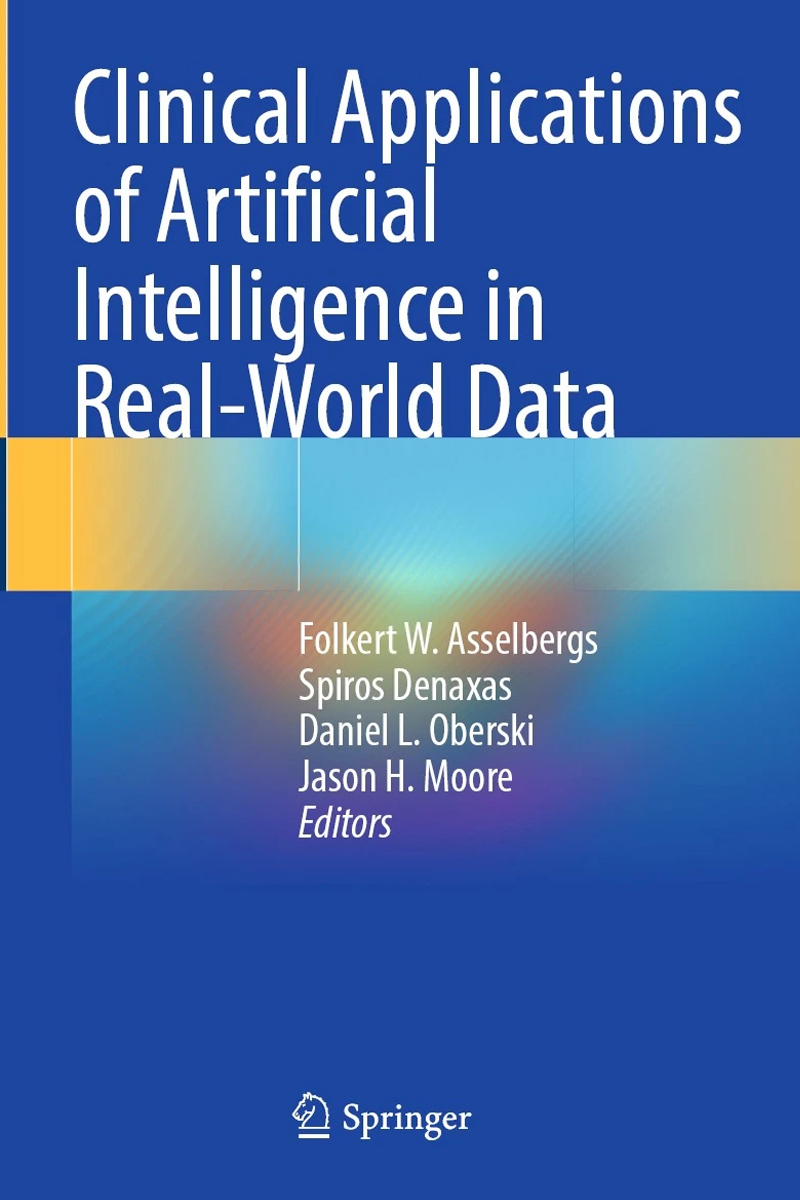Discoveries
AI: A Look at Its Power and Potential
Jun 03, 2024 Jeremy Deutchman

Artificial intelligence (AI) has nearly limitless potential to advance scientific knowledge and transform medical outcomes. Harnessing its possibilities—and grappling with its implications—is the focus of two new books edited by Jason Moore, PhD, chair and professor of Computational Biomedicine at Cedars-Sinai.
Clinical Applications of Artificial Intelligence in Real-World Data offers clinicians insights into how AI is revolutionizing decision-making in medicine. The book also equips them with a broader understanding of the critical steps necessary for successful AI implementation.
"Any hospital utilizing AI for clinical care needs to have a system in place to evaluate and deploy the technology. Then, the AI needs to be integrated with the electronic health record and other clinical systems so it can provide the right information at the right time," Moore said. "Even after it is rolled out, AI needs to be monitored on an ongoing basis because data and populations drift over time, and that can affect performance. There are also concerns around bias and making sure the AI is treating all patients fairly regardless of background."
"There are so many aspects to managing AI; no one person can implement it by themselves. It takes a team—of clinicians, AI experts, information technology experts and others—for the technology to have an impact."
In offering key considerations for utilizing AI, and in detailing some of its specific challenges, Moore has created a practical guide for readers to navigate the technology’s pitfalls and promises. In healthcare, AI requires an all-hands-on-deck approach, he said.
"There are so many aspects to managing AI; no one person can implement it by themselves," he said. "It takes a team—of clinicians, AI experts, information technology experts and others—for the technology to have an impact."
Used properly, AI can help expand the horizons of medical knowledge and apply new insights to complex problem-solving. In Integrative Bioinformatics for Biomedical Big Data, Moore and his colleague Xiuzhen Huang, PhD, a research scientist and research professor of Computational Medicine at Cedars-Sinai, explore how AI can reshape the scientific landscape by enhancing what they refer to as "no-boundary thinking (NBT)."
"Most problems identified for study in science and medicine are defined within a single discipline: A cardiologist and a neurologist know the literature only in their specific area, which necessarily limits the kinds of questions they’re likely to ask," Moore said. "The goal of NBT is to enable diverse scientists and clinicians to look across all literature and synthesize information across every discipline when defining a new problem. We believe AI can help them do that."
By adopting NBT and shedding old ways of thinking, researchers can lead the way in game-changing innovation.
"I work in the Alzheimer’s space, and we spend a lot of time focusing on things we already know about," Moore said. "But we haven’t had a blockbuster drug in 20 years. If we want to accelerate discovery, we need to consider things people haven’t thought of before."
Widespread adoption of NBT would require a shift in current methods of both teaching and learning.
"Students aren’t trained in NBT. As they specialize, they drill down into one small piece of one particular discipline," Moore said. "We need to retool education at both an undergraduate and graduate level to help widen their perspectives. It’s a somewhat radical idea that could open up exciting new lines of investigation."


